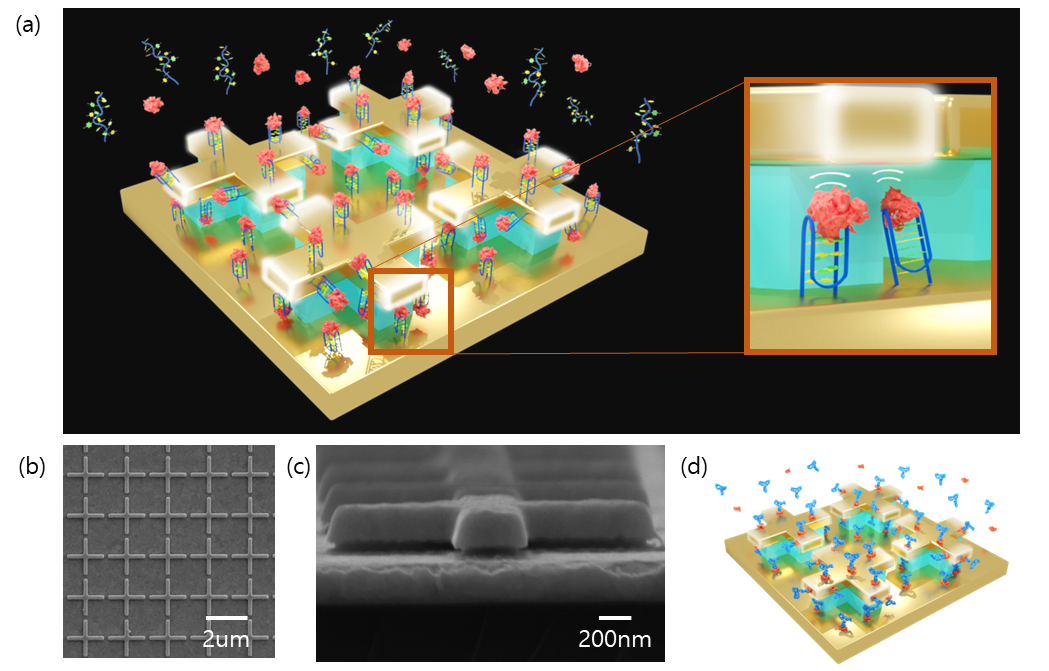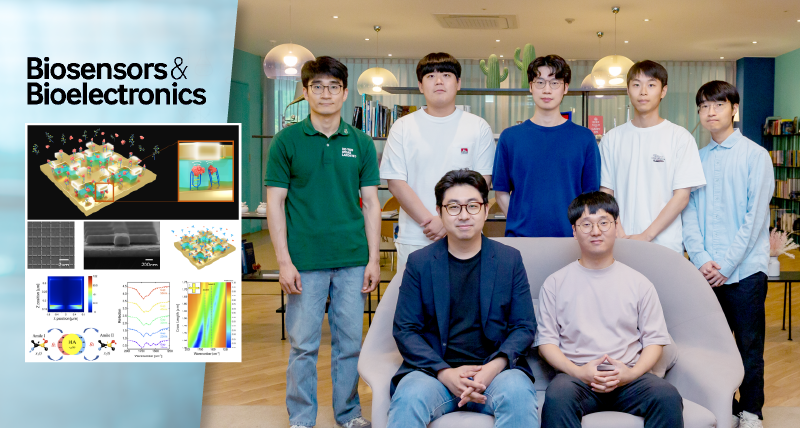A research team, affiliated with UNIST has unveiled a revolutionary biosensor technology that uses light to quickly and accurately detect trace amounts of proteins. This breakthrough has significant implications for preventing the spread of infectious diseases, including COVID-19.
Jointly led by Professor Jeongwon Lee in the Department of Electrical Engineering at UNIST and Dr. Joo-Yun Jung from the Nano-convergence Manufacturing Research Division at Korea Institute of Machinery and Materials (KIMM), the research team created a novel biosensor that leverages the power of surface-enhanced infrared absorption spectroscopy (SEIRS) to detect proteins in complex biological structures with unprecedented sensitivity. The key innovation lies in the use of a metamaterial absorber that is highly responsive to mid-infrared light, allowing for accurate measurement of protein concentration without the need for biomarkers.
Unlike traditional enzyme immunoassay methods (ELISA), which rely on color changes triggered by enzymes, this new sensor detects proteins quickly and accurately without the need for additional reagents or complex procedures. This not only saves time and resources, but also opens up new possibilities for diagnosing diseases in clinical settings.

Figure 1. (a) Schematic of a vertical nanogap biosensor for label-free thrombin immunoassay, with thrombin-binding aptamer (TBA) immobilized on the metamaterial absorber (MA) structure. Top (b) and side views (c) of the SEM image. (d) Illustration of protein A/G and IgG bilayer-incubated MA structure.
The team’s aptamer-based immunoassay achieved a detection limit of 267.4 pM for thrombin, a protein that plays a crucial role in blood clotting. Aptamers are highly promising alternatives to antibodies, offering improved specificity and sensitivity. The study demonstrates the potential for immunoassays using thrombin-binding aptamers to detect biomarkers with minimal time and effort.
According to Professor Lee, “Our SEIRS-based biosensor can detect even tiny amounts of protein using a strong binding effect, making it an inexpensive and rapid diagnostic tool for healthcare professionals.” Dr. Jung added, “The infrared metamaterial absorber-based biosensor has great potential to contribute significantly to disease prevention by enabling early detection of infectious diseases.”
Their findings have been published in the online version of Biosensors and Bioelectronics on May 27, 2024. The study has been supported by the Ministry of Science and ICT (MSIT), KIMM, and the Ministry of Trade, Industry and Energy (MOTIE).
Journal Reference
Mingyun Kim, Do Hyun Kang, Jun-Hyuk Choi, et al., “Highly sensitive and label-free protein immunoassay-based biosensor comprising infrared metamaterial absorber inducing strong coupling,” Biosensors & Bioelectronics, (2024).












